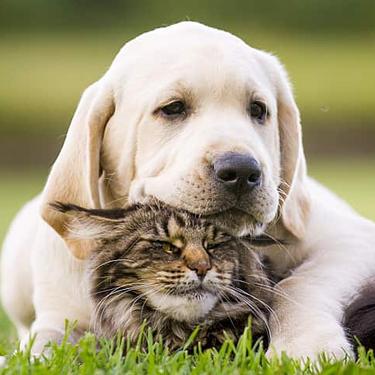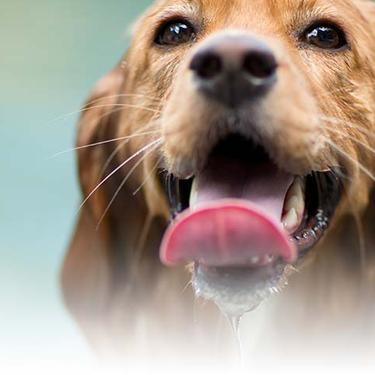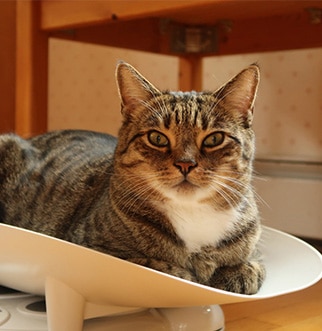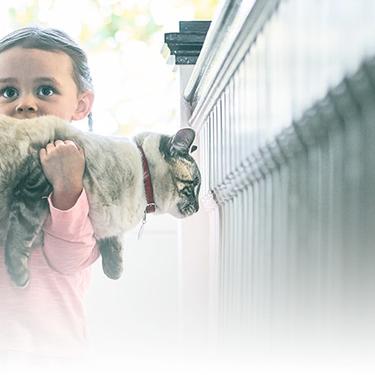
-
Find the right food for your petTake this quiz to see which food may be the best for your furry friend.Find the right food for your petTake this quiz to see which food may be the best for your furry friend.Featured products
 Puppy Large Breed Chicken & Brown Rice Recipe
Puppy Large Breed Chicken & Brown Rice RecipeVital nutrients to support 5 essential building blocks for lifelong health
Shop Now Hill's Science Diet Adult 7+ Senior Vitality Small & Mini Chicken & Rice Recipe Dog Food
Hill's Science Diet Adult 7+ Senior Vitality Small & Mini Chicken & Rice Recipe Dog FoodImproves everyday ability to get up & go
Shop Now Puppy Lamb Meal & Brown Rice Recipe
Puppy Lamb Meal & Brown Rice RecipeVital nutrients to support 5 essential building blocks for lifelong health
Shop NowFeatured products Adult Sensitive Stomach & Skin Cat Food
Adult Sensitive Stomach & Skin Cat FoodHighly digestible food that is gentle on the stomach. Nourishes skin & promotes lustrous fur.
Shop Now Adult Indoor Chicken Recipe Cat Food
Adult Indoor Chicken Recipe Cat FoodSupports energy level and beautiful fur in indoor cats
Shop Now Adult 7+ Chicken Recipe Cat Food
Adult 7+ Chicken Recipe Cat FoodSupports energy level and beautiful fur in mature cats
Shop Now -
Dog
- Dog Tips & Articles
-
Health Category
- Weight
- Food & Environmental Sensitivities
- Urinary
- Digestive
- Joint
- Kidney
-
Life Stage
- Puppy Nutrition
- Adult Nutrition
Cat- Cat Tips & Articles
-
Health Category
- Weight
- Skin & Food Sensitivities
- Urinary
- Digestive
- Kidney
-
Life Stage
- Adult Nutrition
Featured articles The Incredible Science Behind Your Pet's Microbiome
The Incredible Science Behind Your Pet's MicrobiomeLearn what a pet's microbiome is, how it contributes to your pet's gut & overall health, and why nutrition is important in maintaining healthy microbiomes.
Read More Pet Food Storage Tips
Pet Food Storage TipsDiscover how and where to store your dry, as well as canned, dog and cat food. Learn how to find the "best before" dates on all Hill's pet food packaging.
Read More Water
WaterDiscover why water is the most important nutrient for your dog or cat to live a healthy life. Find out how much water your pet should consume each day.
Read More -


Are cats nocturnal? It's a valid question, considering your cat likely zooms around your darkened house — and maybe even demands at least one late-night snack — between the popular feline happy hour of 3:00 a.m. and 4:00 a.m.
Despite your kitty's disrespect for your sleep schedule, she's not actually nocturnal: she's crepuscular. This biological category describes animals whose peak hours of activity occur at dawn and dusk, explained Mother Nature Network. Many crepuscular animals, from prey like rabbits to predators like lions, evolved to take advantage of times when temperatures were the coolest in their desert habitats.
Understanding the typical pattern of crepuscular behavior — brief bursts of energy tempered by an extended period of rest — may help you see why your kitty is most playful at precisely the same time that you are ready to wind down.
Crepuscular Animals
Truly nocturnal animals, such as raccoons and owls, roam around throughout the night — taking advantage of the darkness to hunt their prey. Diurnal animals like squirrels, butterflies, and humans, on the other hand, work the day shift. But crepuscular animals take advantage of the receding daylight and darkness to capture the best of the daytime and nighttime worlds.
"The most quoted theory for crepuscular activity is that it offers an optimal balance," explained BBC Earth News. "There is just enough light to see, but it is dark enough to lower the odds of being caught and eaten." Predators like hawks have decreased vision during the twilight hours and, therefore, present less of a hazard to small, tasty crepuscular critters.
While this behavior is instinctive to each species, the structure of an animal's eyes plays a big part in whether they are nocturnal, diurnal, or crepuscular. Some crepuscular creatures — like your kitty — have slit-shaped retinas, as do nocturnal animals. (This explains why she easily can pounce on your toes in even the darkest room.)
"If you have a vertical slit, you're very likely to be an ambush predator," said Martin Banks, a vision scientist, to National Public Radio (NPR). The vertical slit has "optical features that make it ideal" for critters like your cat to lie in wait (for long periods of time) before pouncing on their prey. You'll often see your kitty display this type of play behavior at dusk or dawn — or perhaps when you're trying to get some shut-eye.
To Sleep or Not to Sleep
Although they are biologically wired to be most active during twilight, some cats carry their exuberant behavior into the wee morning hours. After all, it's not as if they're perky from sleeping sixteen hours in a row. Most cats wake their pet parents up from a deep sleep at least once per night — a habit that can drive their humans batty. It's no fun to walk around sleep-deprived. (This pattern of nighttime antics typically prompts the "Are cats nocturnal?" question.)
This is where a cat's sleeping pattern comes into play. Sleeping (and restful dreaming) for cats is not the same as for their human family members, explained Animal Planet. Cats "do experience both non-REM and REM sleep, but for cats, 'asleep' is not 'off the clock.' Cats are always on the alert, even when they're dozing. If a strange noise wakes them up, they're almost instantly aware and fully operational. It's an ability that cats (and wild animals in general) depend on to stay safe, and fed, in [nature]." You may notice this in your own home when, say, your furry friend is in a seemingly deep sleep far away in the corner of the house but comes running at the sound of her cat food container being cracked open.
House cats don't depend on hunting for their source of food, but this doesn't mean those instincts are gone. As genetics professor, Dr. Wes Warren, told Smithsonian Magazine, "cats have retained their hunting skills, and they're less dependent on humans for their source of food." This is why your kitty will "hunt" her toys, kibble, and cat treats. Her hunting instincts are intrinsically connected with her crepuscular nature, resulting in a fascinating form of indoor behavior that aligns with the behavior of her ancestors — it's like having your very own miniature lion.


Tasty Tips
Power Napping
There is a reason that the term "cat nap" exists: a mature adult cat needs thirteen to sixteen hours of sleep a day, and kittens and young cats need up to twenty hours, explained Petcha. This rest is taken in a continuous twenty-four-hour cycle of naps instead of a single long snooze. Your kitty takes power napping to the extreme, storing up energy for use during her most active periods. It just seems like your kitty sleeps all day and plays all night. In reality, her schedule follows a different sort of pattern.
While your cat's bursts of activity may be somewhat short, they are very productive. As with all crepuscular animals, your industrious feline friend knows how to conserve and expend her energy. To make the most of these active periods, she must expel her energy and will seek out entertainment — perhaps by batting around her jingly balls or tossing a catnip mouse into the air. This also may be the time she gets into shenanigans around the house, so be on the lookout for especially mischievous scratching or exploring behavior at dusk and dawn.
These highly active time periods give you the opportunity to study your kitty's behavior in her own habitat, so to speak, as you can see her in action. Does she stalk a stuffed toy for half an hour before finally pouncing? Will she peer around corners at treats as if they might fly away? Are the folds in the carpet a makeshift burrow for crackly balls? It's a pretty amazing experience to see your domestic cat mimic the same behavior that her big cat cousins employ.
It's true that some cats are laid back no matter what their instinct or breed dictates, but all cats excel at energy conservation and making the most out of their active periods. The twilight hours are when you'll see your kitty's spirited personality on display.


Christine O'Brien is a writer, mom, and long-time cat parent whose two Russian Blues rule the house. Her work also appears in Care.com, What to Expect, and Fit Pregnancy, where she writes about pets, pregnancy, and family life. Find and follow her on Instagram and Twitter @brovelliobrien.
Related products

Highly digestible food that is gentle on the stomach. Nourishes skin & promotes lustrous fur.

Low calories for less active cats

Supports energy level and beautiful fur in indoor cats

Supports energy level and beautiful fur in mature cats
Related articles

What is the best food for an overweight cat? Learn all about weight control food for cats, including what's in it and how it works.

How do you get a cat to lose weight? Learn all about cat foods for weight loss, including how to choose weight control cat food and exercise tips.

What is the best food for an overweight cat? Learn all about weight control food for cats, including what's in it and how it works.

Discover how to identify cat sensitive skin and what you can do to help your cat thrive from head to paw.

Put your cat on a diet without them knowing
Our low calorie formula helps you control your cat's weight. It's packed with high-quality protein for building lean muscles, and made with purposeful ingredients for a flavorful, nutritious meal. Clinically proven antioxidants, Vitamin C+E, help promote a healthy immune system.
Put your cat on a diet without them knowing
Our low calorie formula helps you control your cat's weight. It's packed with high-quality protein for building lean muscles, and made with purposeful ingredients for a flavorful, nutritious meal. Clinically proven antioxidants, Vitamin C+E, help promote a healthy immune system.

